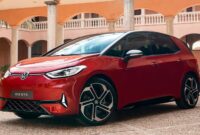The Dodge Challenger is nearing the end of the road, at least in its current non-electrified form. That doesn’t necessarily mean the muscle car will lose its status as an American automotive icon, though – and this is true not only in North America. While it has never been nearly as popular as other performance vehicles in Europe, it remains a cult classic even in markets that are not directly associated with the model. Someone in Bulgaria even thought it would be a smart marketing move to use the Challenger’s image as a legend to boost their business.
What you see in the gallery below is a 2012 Dodge Challenger that was recently sold to a new owner in the country. While it may look like a newer model, the front end has been replaced with a fascia from a facelifted Challenger. And yes – the hood comes from a Demon but there’s no 6.2-liter supercharged V8 underneath it. That blue plate that sits on the roof denotes that this is a driving school vehicle and it will soon be used in Sofia, Bulgaria’s capital with a population of around 1.25 million people.
This isn’t the most interesting thing about this black Challenger, though. The 3.6-liter V6 Pentastar engine that sits under the bonnet no longer runs on gasoline and burns LPG instead. Bulgaria is one of the countries in Europe with the highest number of vehicles using liquefied petroleum gas as a main fuel. LPG is a gas that contains a flammable mixture of hydrocarbon gases, specifically propane, propylene, butylene, isobutane, and n-butane. It is widely used as a cheaper and cleaner alternative to gasoline in certain regions around the world.
So, to summarize, this is a base-grade muscle car running on an alternative fuel that is going to be used as a driving school vehicle. The V6 engine found in this particular Challenger is rated at 305 horsepower (227 kilowatts) and 268 pound-feet (363 Newton-meters) of torque from the factory but the output is likely lower due to the use of LPG. It is still way more powerful than most other training vehicles in Bulgaria and the region as these are often small downsized European and Asian hatchbacks. As a final note, the car uses an LPG conversion kit, which means the engine can still run on gasoline when needed.




